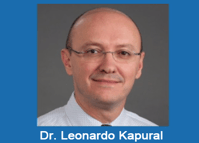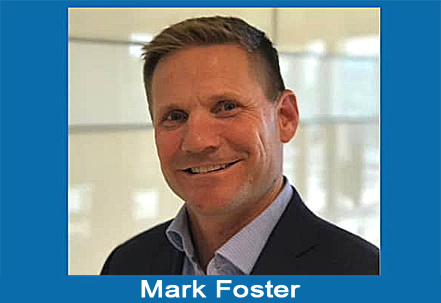Leonardo Kapural, MD discusses interim results from SENZA-CAP in a SmartTRAK interview at ASRA 2017
 At the recent American Society of Regional Anesthesia and Pain Medicine (ASRA)
At the recent American Society of Regional Anesthesia and Pain Medicine (ASRA)
annual meeting in Lake Buena Vista, FL, Leonardo Kapural, MD, professor of anesthesiology at Wake Forest University and principle investigator of the SENZA-RCT, presented interim three month results from SENZA-CAP, a multicenter feasibility study evaluating use of 10 kHz spinal cord stimulation (SCS) for the treatment of chronic abdominal pain (CAP). (See ASRA Poster 4491.)
In an interview at ASRA, SmartTRAK spoke to Dr. Kapural regarding key findings from this study, the addressable market for SCS in chronic abdominal pain, patient engagement as a potential variable, and what’s next for this research.
A transcript of SmartTRAK’s interview with Dr. Kapural is below. Or click on the following video to view the interview recorded live at ASRA 2017. (12:06 minutes.)
SmartTRAK:Today you presented a feasibility study of the results of high frequency spinal cord stimulation at 10 Kilohertz for the treatment of chronic abdominal pain. Just interim results. Could you give us a summary of that study and maybe highlight some of the key findings.
Leonardo Kapural, MD: This is an interim analysis, obviously, so enrollment only includes twenty patients. But the trial conversion rate of 78% and success improvements in pain scores were profound, from about eight point something to less than two. It was a really good basis to continue the study and to look into a prospective randomized trial in the future.
So, can you talk a little bit about the type of patients that were included. What kind of patients. What pain?
LK: This particular sub-group of the patients that we enrolled in this trial that we received IDE from the FDA. They were patients with gastroparesis. Patients with chronic pancreatitis. Patients with intra-abdominal adhesions, responsive to visceral block, like splanchnic blocks. And, also, some of the other dysmotility syndromes. Other patients that we see, in the past, and they were published in a small and larger case series, using conventional stimulation, including some other patients and mainly with visceral source of chronic abdominal pain.
What is the scope of this problem? I didn't realize there were so many patients that had chronic abdominal pain like this. Do you have any idea how patients we're talking about in the United States?
LK: We do. Believe it or not, about sixteen million Americans who actually check with anybody, including primary care, or some provider, regarding transient or persistent chronic abdominal pain. Out of those, 2.4 million, have such severe pain that they go to see specialists.
We're talking about persistence of the pain now. So the population of the patient and the target for those who have chronic abdominal pain that is maintained past the six month time period, is enormous. It may be less than 2.4 million, but it is still extremely high.
How are those patients currently being treated?
LK: If you look at some of the articles and previous text books on chronic abdominal pain, they suggested opioids and psychological treatments. None of those that we focus on today.
So, the scope of the problem is pretty huge then. As far as the location, I know there has been some discussion about what level of the spinal cord these different leads are placed, depending on the different types of pain. In this situation, where are the leads placed?
LK: Right. So similarly we use T8 and T9 for back pain, we use T4, T5 for belly pain. And it seems to be very clear now, we are very clear about the location of the leads. With most of the positive effects we achieve in mid portion of the T5.
So what's next? You did the feasibility study, and what is next for this research?
LK: Well obviously I would love to see a large randomized prospective trial and as a follow-up FDA approval as a new indication and benefit to all of our pain physicians across the country. I think that this would be definitely a huge another step in recognizing neuromodulation as the some of the best and most effective treatments for chronic pain in general.
So far as "on label," is this an "on label" indication for existing spinal cord stimulators?
LK: No, we got an IDE from the FDA for this study, so this is "off label" indication right now. As I said, the FDA study will open up hopefully a door, to use it in a regular everyday therapy, in chronic interventional pain clinics.
Can we can assume it's probably not going to be reimbursed? So, the adoption of this would be a ways away, depending on the clinical trial results, and getting reimbursements. Is that fair to say?
LK: Right, I mean the reimbursement is not always tied to off label indication. We actually did that before. We implanted quite a few of these conventional stimulators and they were covered. However, it will give us evidence, and clear evidence, of how effective this therapy is to treat chronic abdominal pain. And what is even more important now, how much degrees of pain we can achieve and how degrees of the opiate use. What kind of opiate sparring effect we can achieve with the stimulation of chronic abdominal pain. I think that the key moment now, especially at this time of the opiate crisis, to have this therapy approved and used in everyday practice.
On another note, at the meeting this morning at some of the poster presentations, you could tell people were asking questions of the presenters and they were questioning the patient engagement. There's been discussions at other meetings about the inherent bias in spinal stimulation research. You were the primary investigator for the SENZA RCT. So in these kinds of studies, are you doing anything to minimize bias, or is there anyway to determine whether or not some of the effects that are seen are not related to the amount of attention a patient gets? Can you address that?
LK: The attention the patient gets from the re-programming device, depends on the amount of the pain effecting the device itself. I think that eliminating parasthesia is one step toward freeing off that issue of ‘Oh, I feel something tingling in my back, it must be working.’That's a nice thing, because the patient does not pay attention to their device and they are basically going on with their life. And I think that minimizes this inherent issue of attention off the patient to the therapy itself.
The therapy itself.
LK: So, eliminating paresthesia, eliminating needs for repeated visits related to re-programming or interaction with the device itself, is what I think is very important when it comes to eliminating that influence, that bias, the inherent bias that we've had over the last 30 years.
Well, it's kind of interesting, because I know in SENZA, the follow-up… they'll say it's the best in the industry. I don't know the exact amount they compare to other devices. I mean, is there anyway to control for that? Is the follow-up similar for HF10 as it is to other spinal cord stimulators as far as, you know?
LK: In our practice, I have my partners that use other devices and I see no difference in follow-up, actually. I think the follow-up seems to be so much more than some of the low-frequency devices when it comes to be programmed, especially when it comes to paresthesia. Just keep in mind, the patient does not feel ... they don't ... they miss the left foot tingling when it comes to HF10 because they feel nothing. On the other hand, with paresthesia- based devices, some of the patients that I have, still have lived for quite a few years with parasthesia. And when they lose the stimulation, the little tingle of the left leg, they'll come back and have another programming device. It seems the attention varies depending on the success of the therapy, depending the type of the therapy, but also depends on the patient themselves, you know? How much of the other possible issues, especially related to issues we inherit with chronic pain patients. You know, attention-seeking, other things. And those are very small proportion to the patient.
In SENZA-RCT, you have another device you compare to. Next, if you do a randomized control trial, will you compare it to another device? Are they going to somehow try and control for some of the follow-up to make sure it is equal between the groups?
LK: It was equal.
Okay, so that wasn't an issue?
LK: During the study, both of the programming, both of the companies had full access to the patients all the time. If you look at my location of the study, I was a participant of one of the sites for the SENZA study and there was quite a bit of engagement by the Boston Scientific reps because they live nearby.
Nevro at that time didn't have anybody near set to travel from Minneapolis to actually see the patients. And, so, we were happy to do that because we thought that both times had to be maximally optimized in order to get the best possible results of the devices. And I think that in that sense, it should be an example of how the study, how the non-inferiority study is done on chronic pain.
Anything else you'd like to add? Or anything important that you think for us to know about your study?
LK: My focus over the last couple years is in chronic abdominal pain. The subpopulation of patients that we treated it in this case series, those are patients with severe pain. All of them. And not only that, they have associated nausea and vomiting in some of those syndromes. We were able to decrease their pain, but also able to reverse quite a bit of their nausea and vomiting related to this dysmotility syndrome, especially. And I'm looking forward to seeing much more of this in the future in the form of a randomized prospective trial. I think that this is one of the best indications for treatment of chronic pain that we have and I definitely look forward to expand this to be used in an everyday practice everywhere in the United States.
That's interesting that you say that about nausea and vomiting. So, could it potentially imply that the treatment affected the gastroparesis itself?
LK: Yes.
Is there anyway to look at transit rates in the colon, things like that, to objectively measure that?
LK: Yes, and we are actually doing that right now.
Awesome. Okay, well thank you so much for your time.
LK: Pleasure.





